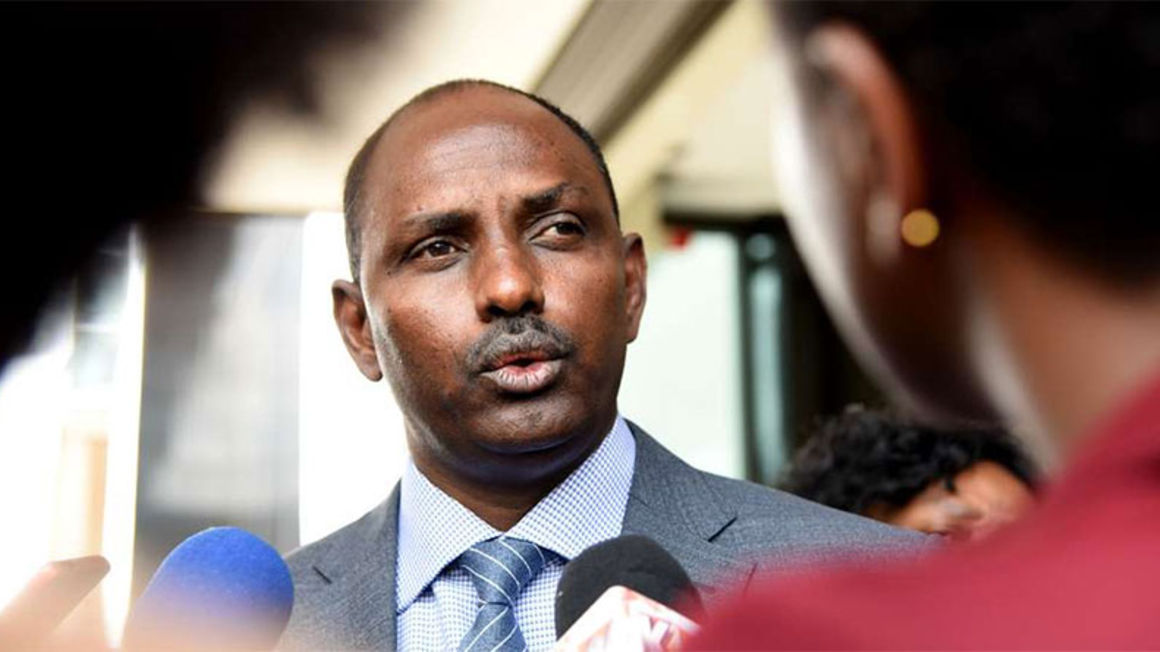
Treasury Secretary Ukur Yatani. FILE PHOTO | NMG
Summary
- There might be some frustration in Jubilee quarters that they’ve had only nine, not ten, bites at the budget “cherry”, particularly given another year lost on account of the still-present Covid-19 pandemic.
- It is unlikely that there will be similar portions of sympathy for their fiscal management during this time.
- As required by law, the National Treasury has called for public comments on the BPS.
- It is fair to say that the current Treasury regime has generally been more forthcoming and proactive in publishing its budget documents for comment than was the case in the past
A pretty clear picture of what Kenya’s 2021/22 budget, the ninth and final one under the current Jubilee administration (yes, these guys will serve nine years and a bit by August 2022, not ten like their multiparty predecessors) emerged this week with the National Treasury’s publication of the 2021 Budget Policy Statement (BPS).
As is procedure, the National Assembly will now interrogate it, and offer feedback to the Treasury in order that national Ministries, Departments and Agencies (MDAs) prepare their detailed budget estimates for Jubilee’s final fiscal year. Ideally, it should also trigger counties in finalising their own Fiscal Strategy Papers, and post-Assembly approval, 2021/22 budget estimates.
There might be some frustration in Jubilee quarters that they’ve had only nine, not ten, bites at the budget “cherry”, particularly given another year lost on account of the still-present Covid-19 pandemic. It is unlikely that there will be similar portions of sympathy for their fiscal management during this time.
As required by law, the National Treasury has called for public comments on the BPS. It is fair to say that the current Treasury regime has generally been more forthcoming and proactive in publishing its budget documents for comment than was the case in the past. Let’s use this moment for a quick reflection.
We will begin with a back of the envelope contextualisation of Jubilee’s fiscal performance since its first budget in 2013/14 using aggregates, including the 2021/22 projection in the BPS. Spending will close out at Sh20.2 trillion, of which the equitable share (excluding conditional grants) to counties is Sh2.5 trillion. Total revenue raised (excluding just over half a trillion in grants) will come out at Sh13.5 trillion. This assumes that 2020/21 and 2021/22 revenues will hit Sh1.8 and 1.9 trillion respectively.
Stop Press! The six months to December 2020 delivered a Covid-19 revenue outturn of Sh800 billion, against a half year target of Sh907 billion. Shortfalls? Sh76 billion in taxes and other ordinary revenue. Sh31 billion in appropriations-in-aid (internal MDA revenues). Let’s park this revenue optimism for now.
Back to those nine-year aggregates. Sh20.2 trillion in spending. Sh13.5 trillion in revenue. Shortfall equals Sh6.7 trillion. Public debt in June 2013 was Sh1.9 trillion. In June 2022 it is projected at Sh8.6 trillion. Difference equals Sh6.7 trillion.
Now, we learned last week that government has been losing Sh2billion a day. Extended over a nine-year period, that’s a total of Sh6.5 trillion, close to what we’ve borrowed. Apparently, as some politico once shouted at us from the rooftops, “the numbers never lie”. You are free to draw your own conclusions.
Oh, here’s a quote to add to the reflection. “…the accumulation of public and public guaranteed debt and the challenges of servicing it is now recognized as a major constraint to rapid growth in the country”
“As at August 2020, the stock of public debt stood at Sh7.06 trillion…(which) together with committed undisbursed debt of Sh1.35 trillion translates to a stock of public debt of Sh8.41 trillion against a ceiling of Sh9 trillion”.
Who said this? Our National Treasury, in its Post Covid-19 Economic Recovery Strategy. To be clear, this statement was published in November 2020. It is missing in the January 2021 BPS.
But there’s more. A couple of weeks ago, the Business Daily reported that “Kenya has bowed to IMF pressure to include Sh3.4 trillion parastatal and county loans as part of the country’s national debt”. Eh? That this “bowing down” will involve “gradually beginning with (non-guaranteed) foreign currency debts by parastatals before including loans from private public-partnerships (PPPs), pension and county governments”. Ouch!
Let’s walk through all of this slowly. In August 2020, when public debt was Sh7.06 trillion, it was actually Sh8.41 trillion? In August 2020. The latest public debt data from the Central Bank of Kenya (CBK), for November 2020, sets the number at Sh7.2 trillion (which should be Sh8.6 trillion?). In November 2020.
Adding Sh3.4 trillion takes us to Sh12 trillion? Given that Treasury now projects June 2022 debt at Sh8.6 trillion, that’s Sh1.4 trillion above CBK’s latest data, which suggests public debt of Sh13.4 trillion by June 2022; all factors considered. Alternatively, assuming the Sh1.35 trillion “committed but undisbursed debt” is factored somewhere, the 2021/22 trillion shilling deficit takes us to Sh13 trillion.
Forget lifting the debt ceiling from Sh9 to Sh12 trillion, it’s raining so hard we need a proper roof! And with all these numbers flying around, we seriously need to lift the veil on our “real’ debt situation.
Yes, we can get into discussions about public debt versus national debt, and the like. We may revisit or even correct these data, for stuff like “double counting”. Hey, let’s do that; let’s get the calculators out!
Even as we figure it’s time to fathom the debt legacy that this Jubilee Administration leaves Kenyans.
In the meanwhile, we have context. Now we can interrogate the actual BPS. Let’s do that next week.





No comments :
Post a Comment